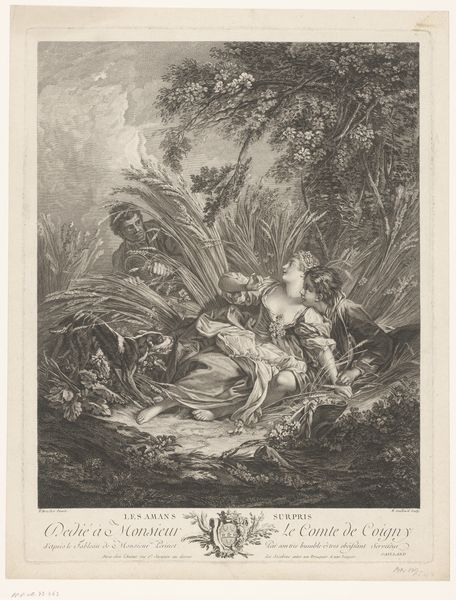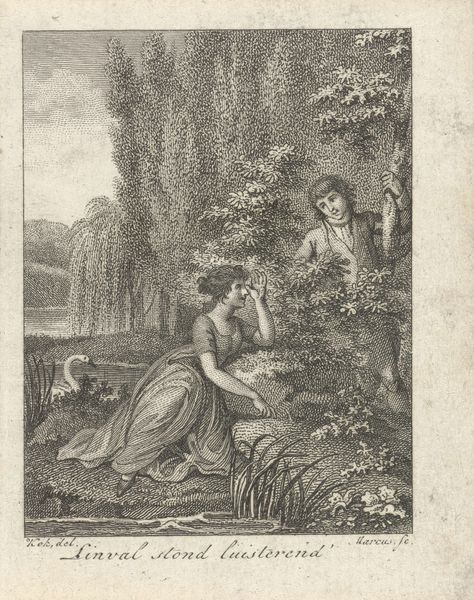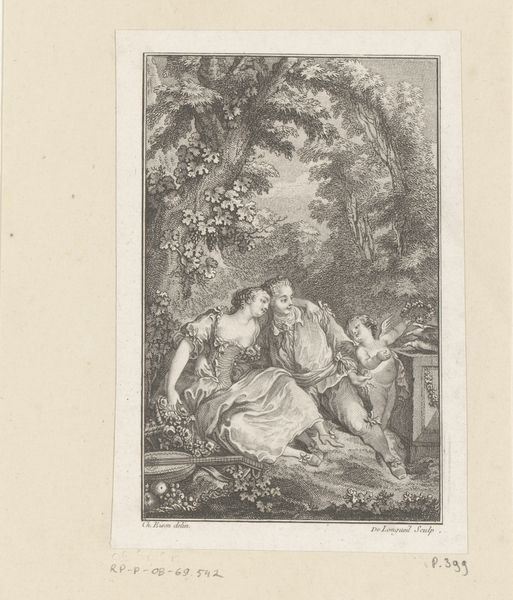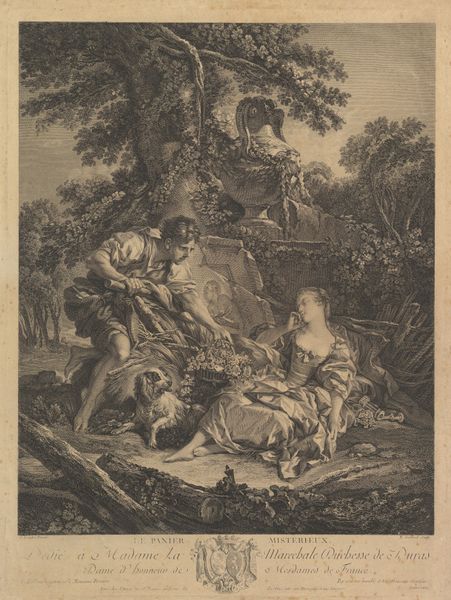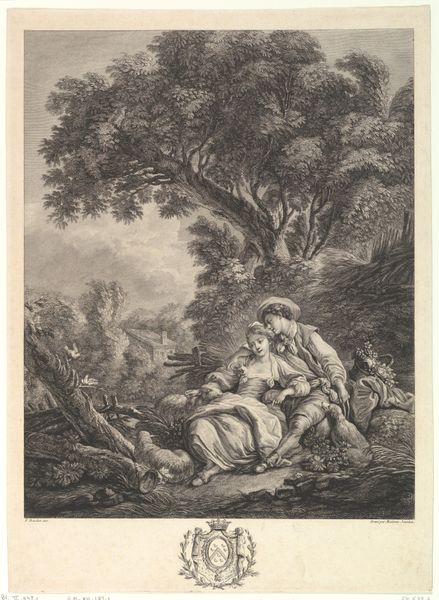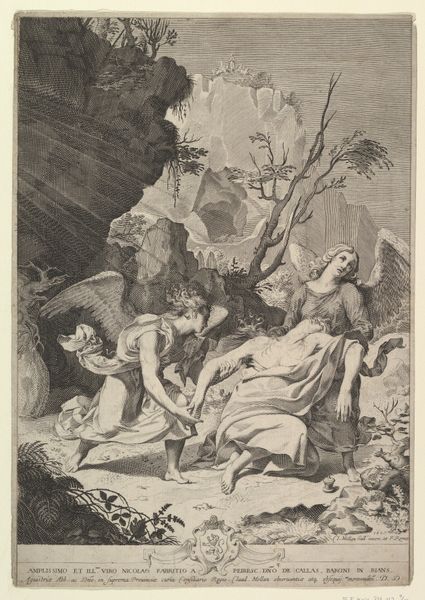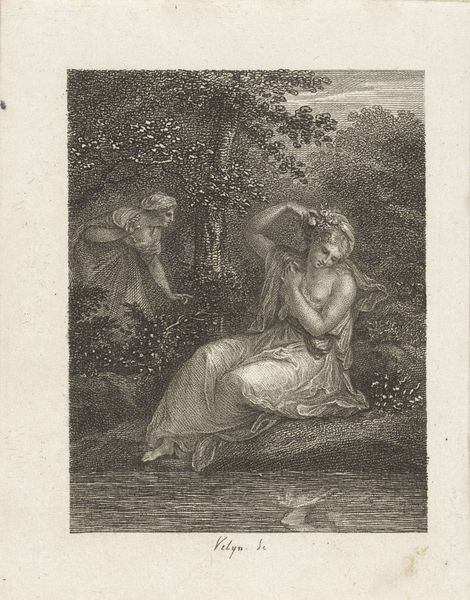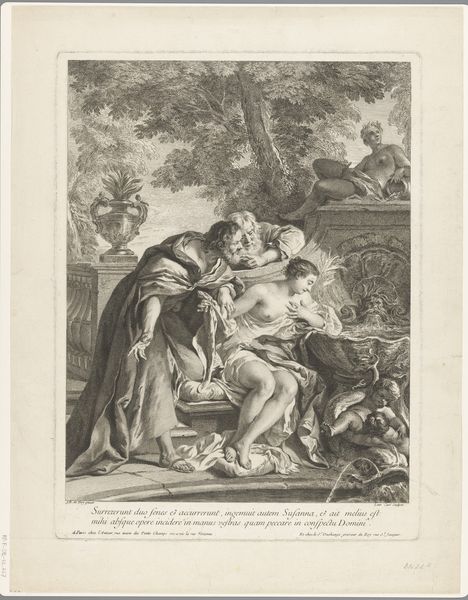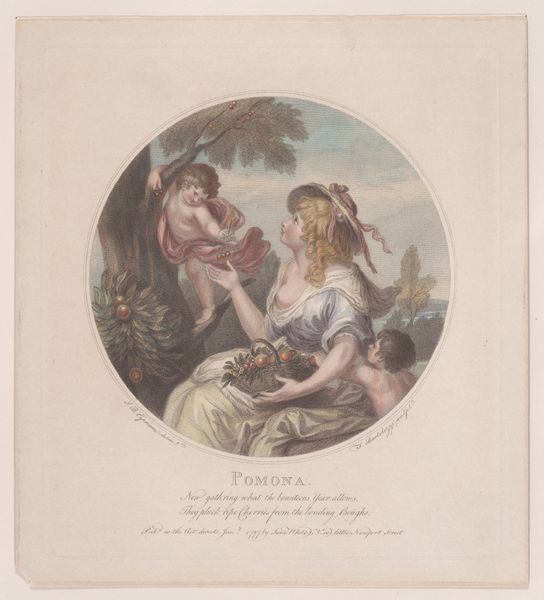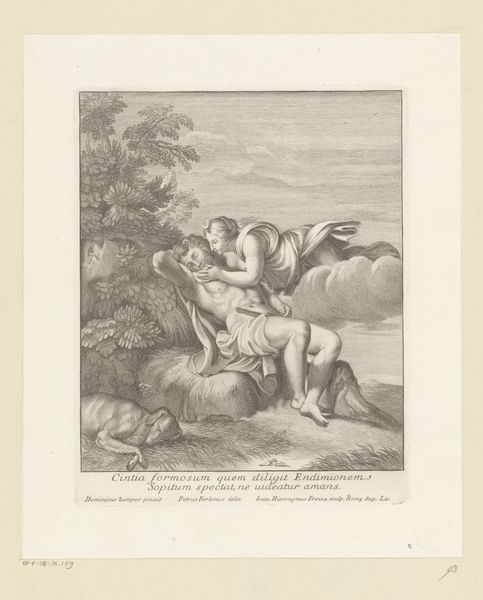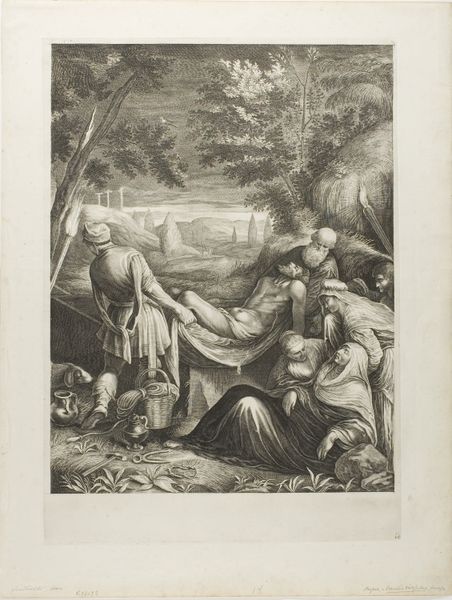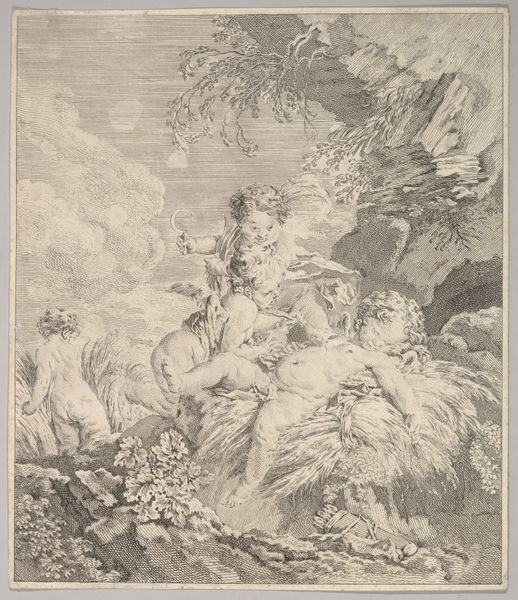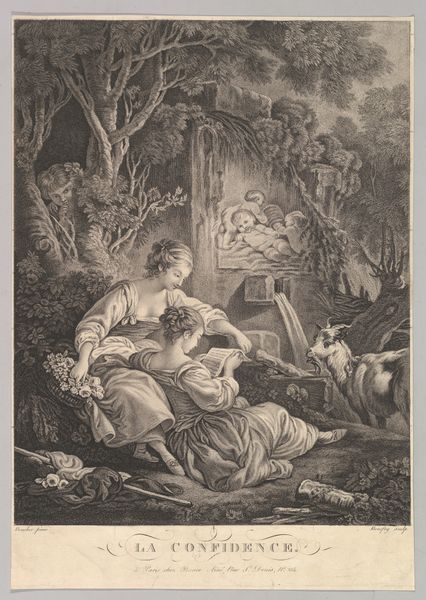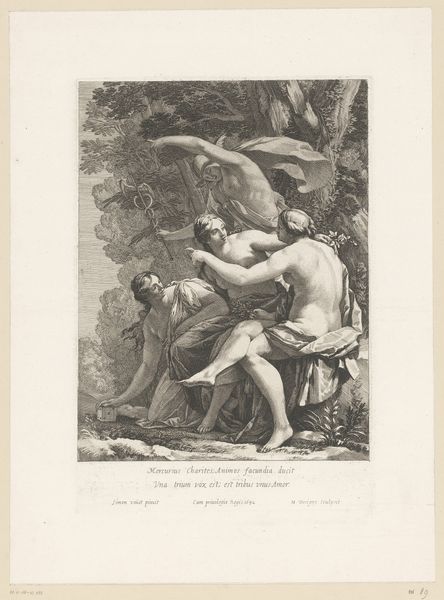
drawing, print, watercolor
#
drawing
#
narrative-art
# print
#
figuration
#
watercolor
#
genre-painting
#
watercolor
#
rococo
Dimensions: Sheet: 20 3/8 x 15 9/16 in. (51.8 x 39.6 cm) Plate: 19 5/16 x 14 15/16 in. (49 x 37.9 cm)
Copyright: Public Domain
Curator: Here we have René Gaillard’s "Les Amans Surpris," or "The Surprised Lovers," a watercolor drawing turned print dating from the latter half of the 18th century. I'm struck by the complex arrangement of figures, caught in what appears to be a moment of unexpected discovery. Editor: It's all a bit saccharine for my taste at first glance. The composition is certainly dynamic, but the subject matter smacks of aristocratic dalliances and carefree living while revolution brews nearby. Is it pure escapism or is there something else at play here? Curator: Formally, the artist’s delicate watercolor application and precise engraving technique contribute to the dreamlike Rococo atmosphere. The sinuous lines of the wheat field draw our eye through the image, culminating in the furtive glances of the hidden voyeur, which in turn contrast with the softness of the embraced lovers. There is a certain complexity to the relationships created. Editor: Perhaps the setting is key here, too. Note the implicit social commentary. A hidden man watches an intimate scene unfolding within nature’s abundance, suggestive of the power dynamics and the privilege afforded by birth and land ownership in pre-revolutionary France. Curator: Precisely! This composition speaks to broader historical contexts as well. I agree. While appearing simple at first, there's tension evident through the positioning of the observer partially hidden in shadow. Editor: It reflects the society's anxieties regarding social upheaval that might have been prevalent in French society at that time. This intimate rendezvous becomes a stage for exploring gender roles, class distinctions, and even the precarious nature of social hierarchies. Curator: An excellent point. By situating the artwork in its historical context, it gains additional depth and nuance. It prompts the contemporary viewer to reflect not only on the artwork’s immediate visual qualities but also on the complex interplay of power dynamics present throughout time. Editor: Yes, looking closer at what otherwise seems to be simple romantic picture, unearths fascinating and complicated sociocultural factors. Curator: Exactly, moving beyond surface interpretations allows for a richer and deeper artistic understanding. Editor: That sort of interrogation is what truly transforms our encounters with art.
Comments
No comments
Be the first to comment and join the conversation on the ultimate creative platform.
